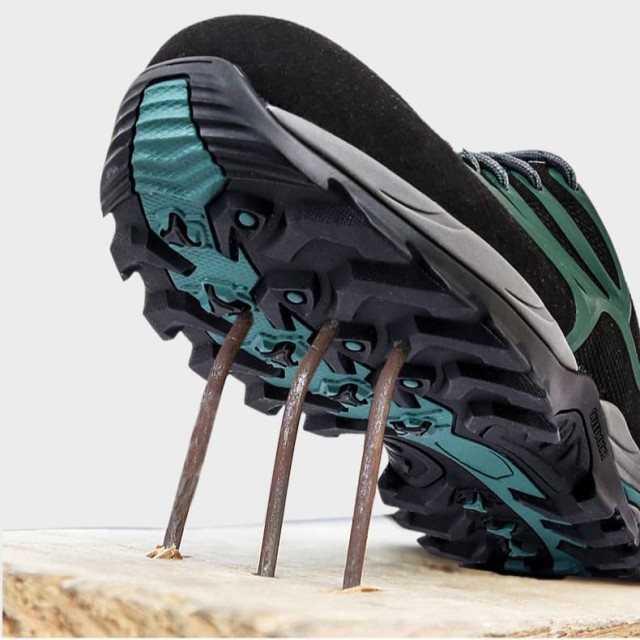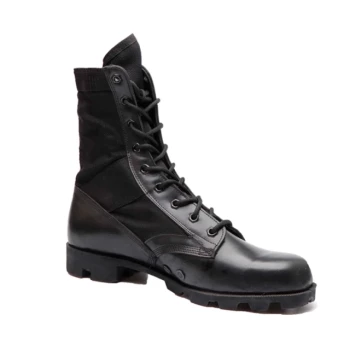Finding the right work shoes isn't just about comfort—it's about preventing injuries, meeting industry regulations, and staying productive through long shifts. This guide breaks down selection criteria by industry, safety standards, and ergonomic design to help you make informed decisions.
Choosing Work Shoes by Industry
Construction & Heavy Labor: Safety Certifications and Hazard Protections
Workers face falling objects, sharp debris, and electrical hazards daily. The right footwear must include:
- Certified Toe Protection: Steel or composite toes meeting ASTM F2413-18 standards for impact resistance (withstands forces over 2,500 lbs) and compression resistance.
- Puncture-Resistant Midsoles: Essential for sites with nails or metal scraps. Look for ASTM F2413 PR labeling.
- Electrical Hazard (EH) Ratings: Boots with EH certification (protection up to 600V in dry conditions) are critical for electricians or those near live wires.
Case in Point: A factory worker avoided crushed toes when a steel beam rolled onto their ASTM-compliant boots—the reinforced toe cap distributed the weight, preventing injury.
Healthcare & Hospitality: Slip Resistance and Long-Hour Comfort
Nurses and chefs need shoes that combine safety with endurance:
- Slip-Resistant Outsoles: Prioritize ASTM F2913-tested soles for wet environments (e.g., kitchens or hospital floors).
- Cushioned Insoles: Memory foam or gel inserts reduce fatigue during 12-hour shifts.
- Breathable Materials: Mesh panels prevent moisture buildup, reducing blister risks.
Corporate & Hybrid Roles: Professional Aesthetics with Ergonomic Support
Office professionals often overlook footwear health, leading to long-term issues like plantar fasciitis. Opt for:
- Arch Support: Shoes with contoured footbeds align posture and reduce lower back strain.
- Lightweight Designs: Avoid heavy soles that cause leg fatigue during commutes.
- Flexible Outsoles: Allows natural foot movement when standing for meetings.
Critical Features for Job-Specific Footwear
Decoding Safety Standards: ASTM, OSHA, and ISO Symbols
- ASTM F2413: The U.S. benchmark for toe protection, electrical hazards, and puncture resistance.
- ISO 20345: Global equivalent, with "SB" (basic safety) to "S3" (waterproof + puncture-resistant) ratings.
- OSHA Compliance: Mandates employer-provided PPE, including footwear for high-risk jobs.
Ergonomic Engineering: Arch Support, Cushioning, and Weight Distribution
Research shows poorly designed shoes increase injury risks by over 40%. Key ergonomic elements:
- Heel-to-Toe Drop: A 10–12mm gradient reduces Achilles tendon strain.
- Wide Toe Boxes: Prevents bunions and allows toe splay during movement.
- Shock Absorption: EVA foam or polyurethane midsoles dampen impact on hard surfaces.
Material Science: Breathability vs. Durability Tradeoffs
- Leather: Durable but less breathable; ideal for construction.
- Synthetics (e.g., nylon): Lightweight and ventilated, better for healthcare.
- Waterproof Membranes (e.g., Gore-Tex): Trade breathability for wet-weather protection.
Real-World Applications and Pitfalls
Common Mistakes to Avoid
- Ignoring EH Ratings: A factory worker suffered shocks because their boots lacked electrical hazard protection despite having steel toes.
- Prioritizing Price Over Safety: Cheap shoes may lack proper arch support, leading to chronic pain.
- Overlooking Fit: Shoes that are too tight restrict circulation, causing numbness during long wear.
Maintenance Tips
- Replace work shoes every 8–12 months or when treads wear down to 1/8-inch depth.
- Rotate pairs to allow materials to decompress between uses.
Step Into Safety with 3515 Footwear
Whether you’re a distributor sourcing bulk orders or a brand owner seeking custom designs, 3515 delivers industry-compliant footwear engineered for real-world demands. From ASTM-certified safety boots to ergonomic office shoes, our solutions blend protection, comfort, and durability—because your workforce deserves the best.
Ready to equip your team? Contact 3515 today for footwear that meets your industry’s unique challenges.
Related Products
- Wholesale Customizable Suede Safety Boots - Puncture-Proof with Velcro Closure
- Durable Leather Work Boots Wholesale Manufacturer & Custom Factory
- Wholesale Durable 6-Inch Work Boots | Custom & Private Label Manufacturer
- Puncture-Resistant Velcro Safety Boots for Wholesale & Custom Manufacturing
- Customizable Anti-Smash Safety Boots for Wholesale & Private Label Manufacturing
Related Articles
- How to Choose Work Boots That Match Your Industry's Safety Needs
- How to Choose Work Boot Materials for Maximum Safety and Durability
- Work Boots vs. Western Boots: How to Choose the Right Footwear for Labor Safety
- Steel Toe Work Boots: Balancing Safety and Comfort for Demanding Jobs
- How to Extend Work Boot Lifespan: Science-Backed Care for Safety & Savings



















